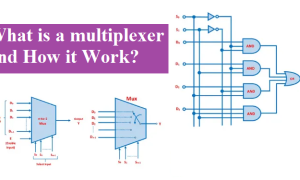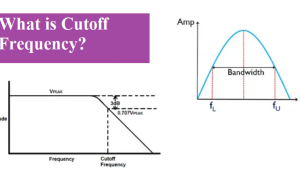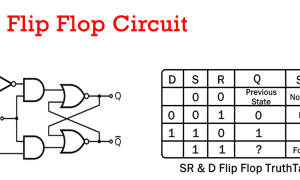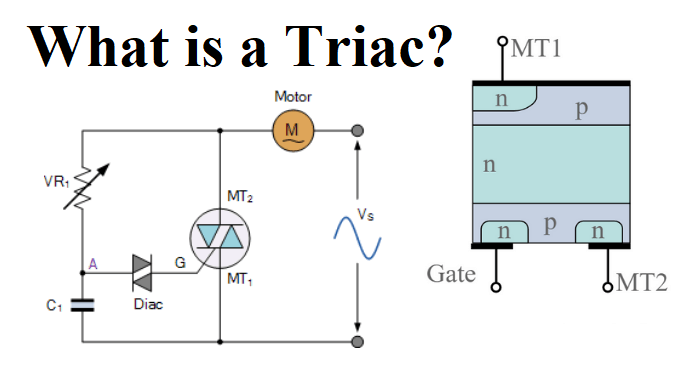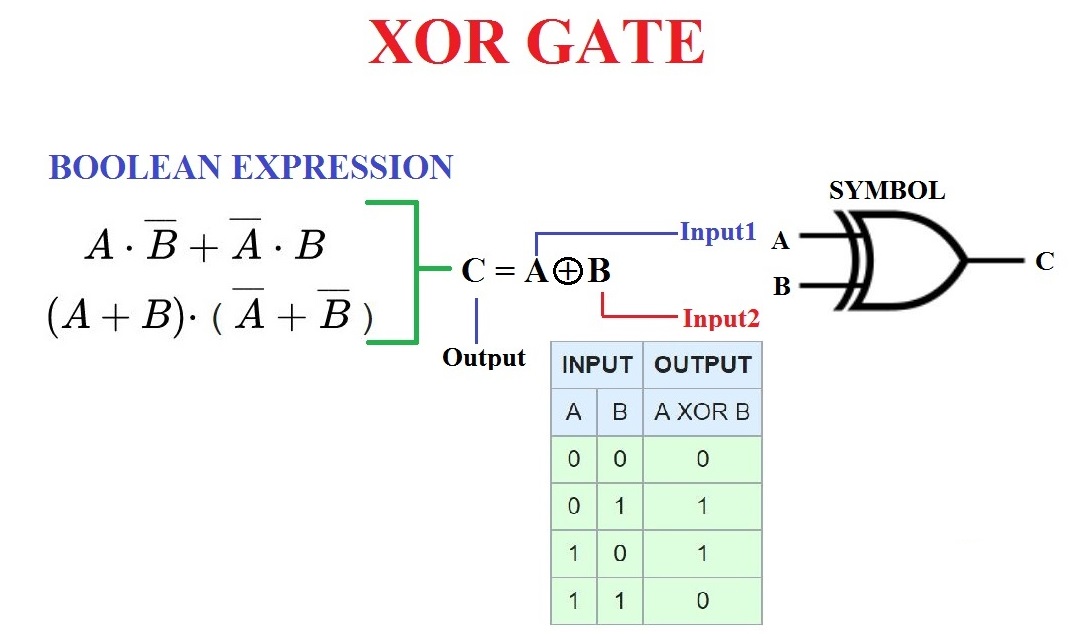sA capacitor is a electrical component passive device that can store an electrical charge on their plates when connected to a voltage source. A capacitor is just like a small battery but work differently. It stores the electrostatic energy in an electric field. In this tutorial we learn about capacitor.

What is capacitor?
A capacitors is an electrical component that stores electrical energy in an electric field between two conductive plates. Capacitors are used in a variety of electrical circuits to store and release electrical energy. They play an important role in filtering, buffering, and smoothing electrical signals, as well as in coupling and decoupling circuit stages. The amount of electrical energy that a capacitor can store is determined by its capacitance, which is measured in Farads. Capacitors are used in many electrical and electronic applications, including power supplies, radios, televisions, computers, and automotive systems.

A capacitor works by storing electrical energy in an electric field that is created between two conductive plates. The conductive plates are separated by an insulating material known as a dielectric. When a voltage is applied across the plates, an electric field is established and charges of opposite polarity are stored on the plates. The magnitude of the electric field, and thus the amount of energy stored in the capacitor, is proportional to the voltage applied and the capacitance of the capacitor. The capacitance of a capacitor is determined by the size and separation of the plates and the type of dielectric material used.
How Does a Capacitor Work?
When a voltage is applied across the capacitor, a current flow into the positive plate and out of the negative plate until the voltage across the capacitor reaches the applied voltage. At this point, the current stops flowing and the energy stored in the electric field is at its maximum. If the voltage across the capacitor is now reduced to zero, the energy stored in the electric field will be slowly released back into the circuit. This property allows capacitors to be used for a variety of applications, such as filtering, smoothing, and buffering electrical signals, as well as for storing and releasing energy in pulse and power circuits.
How Do You Determine the Value of Capacitance?

The value of capacitance, which is measured in Farads (F), can be determined from the following formula:
C = ε * A / d
Where: C is the capacitance in Farads (F)
Ε is the permittivity of the dielectric material, which is a constant that depends on the material used and its properties
A Is the area of the conductive plates in square meters (m^2)
D is the separation between the conductive plates in meters (m)
So, in essence, the capacitance of a capacitor is proportional to the area of its conductive plates and inversely proportional to the distance between them. Increasing the plate area or reducing the plate separation will result in a higher capacitance. The type of dielectric material used will also affect the capacitance, with different materials having different permittivity values.
In practice, the value of capacitance is often indicated on the physical component itself or in the manufacturer’s datasheet. Capacitors are available in a range of values, from a fraction of a picofarad (pF) to several microfarads (µF) or even farads (F). The value of capacitance required for a particular application depends on the specific requirements of the circuit and the desired capacitance range.
Energy Stored in a Capacitor
The energy stored in a capacitor is given by the following equation:
U = ½ * C * V2
Where: U is the energy stored in the capacitor in joules (J)
C is the capacitance of the capacitor in Farads (F)
V is the voltage across the capacitor in volts (V)
So, in essence, the energy stored in a capacitor is proportional to the square of the voltage across it and the capacitance of the capacitor. This means that if the voltage across the capacitor is increased, the energy stored in the capacitor will also increase. The capacitance of the capacitor also affects the amount of energy stored, with larger capacitances storing more energy than smaller capacitances for a given voltage.
It’s Important to note that the energy stored in a capacitor can be released rapidly, which makes it useful for applications that require a quick release of energy, such as in pulsed power supplies or voltage regulators. However, the energy stored in a capacitor can also be dangerous, as it can discharge quickly and cause harm to people or damage to equipment. Therefore, it’s important to handle capacitors safely and to follow proper safety precautions when working with them.
Standard Units of Capacitance
- Microfarad (μF)1μF = 1/1,000,000 = 0.000001 = 10-6 F
- Nanofarad (nF)1nF = 1/1,000,000,000 = 0.000000001 = 10-9 F
- Picofarad (pF)1pF = 1/1,000,000,000,000 = 0.000000000001 = 10-12 F
Then using the information above we can construct a simple table to help us convert between pico-Farad (pF), to nano-Farad (nF), to micro-Farad (μF) and to Farads (F) as shown.
| Pico-Farad (pF) | Nano-Farad (nF) | Micro-Farad (μF) | Farads (F) |
| 1,000 | 1.0 | 0.001 | |
| 10,000 | 10.0 | 0.01 | |
| 1,000,000 | 1,000 | 1.0 | |
| 10,000 | 10.0 | ||
| 100,000 | 100 | ||
| 1,000,000 | 1,000 | 0.001 | |
| 10,000 | 0.01 | ||
| 100,000 | 0.1 | ||
| 1,000,000 | 1.0 |
A parallel plate capacitor Is a basic type of capacitor that consists of two parallel conductive plates separated by a dielectric material. The conductive plates are typically made of metal and can be in the form of flat sheets, cylinders, or spheres. The dielectric material is an insulator that is placed between the plates to increase the capacitance of the capacitor.
Capacitance of a Parallel Plate Capacitor
When a voltage is applied across the parallel plates, an electric field is established between them, and charges of opposite polarity are stored on the plates. The magnitude of the electric field and the amount of energy stored in the capacitor are proportional to the voltage applied and the capacitance of the capacitor. The capacitance of a parallel plate capacitor is given by the following equation:
C = ε * A / d
Where: C is the capacitance in Farads (F)
Ε is the permittivity of the dielectric material, which is a constant that depends on the material used and its properties
A is the area of the conductive plates in square meters (m2)
D is the separation between the conductive plates in meters (m)
Factors Affecting Capacitance
There are several factors that can affect the capacitance of a capacitor:
Dielectric Material:
The type and properties of the dielectric material used between the conductive plates can have a significant effect on the capacitance of a capacitor. Materials with high permittivity values increase the capacitance of the capacitor, while materials with low permittivity values decrease it.
Plate Area:
The surface area of the conductive plates also affects the capacitance of a capacitor. Larger plate areas result in higher capacitances, while smaller plate areas result in lower capacitances.
Plate Separation:
The distance between the conductive plates, also known as the plate separation or plate spacing, also affects the capacitance. Smaller plate separations result in higher capacitances, while larger plate separations result in lower capacitances.
Shape of the Plates: The shape of the conductive plates also affects the capacitance of a capacitor. For example, the capacitance of a cylindrical capacitor is different from that of a parallel plate capacitor, and the capacitance of a spherical capacitor is different from that of a cylindrical capacitor.
Temperature:
The temperature of the dielectric material can also affect the capacitance of a capacitor. In general, the capacitance of a capacitor decreases as the temperature increases, although the exact effect of temperature on capacitance depends on the specific dielectric material used.
It’s Important to consider these factors when selecting a capacitor for a specific application or when designing a circuit that uses capacitors. Understanding how these factors affect the capacitance of a capacitor can help ensure that the capacitor meets the requirements of the application and operates correctly within the circuit
What Are the Applications of Capacitors?
Capacitors have a wide range of applications in various fields, including electronics, electrical engineering, and power systems. Some of the most common applications of capacitors are:
- Power supplies: Capacitors are commonly used in power supplies to store energy and smooth out voltage fluctuations. Filtering: Capacitors are used in electronic circuits to filter signals and remove unwanted noise or interference.
- Coupling: Capacitors are used in coupling circuits to pass only the AC component of a signal from one circuit to another while blocking the DC component.
- Energy storage: Capacitors can store large amounts of electrical energy, making them useful in applications such as backup power supplies and high voltage energy storage systems.
- Decoupling: Capacitors are used in decoupling circuits to provide a stable supply voltage for electronic components, preventing fluctuations in the power supply from affecting the performance of the components. Timing: Capacitors are used in timing circuits to determine the timing of events in electronic systems.
- Signal processing: Capacitors are used in signal processing applications to store and release electrical charges, enabling the processing of signals in a specific manner.
- Lighting: Capacitors are used in lighting applications to store energy and discharge it in short bursts, providing the high voltage needed to ignite gas discharge lamps.
- Motor starting: Capacitors are used in motor starting circuits to provide the high current needed to start an electric motor.
These are just a few examples of the many applications of capacitors. The versatility and usefulness of capacitors make them an essential component in a wide range of electronic and electrical systems.
Also read:- Binary number, Binary multiplications,
Frequently Asked Questions on Capacitors and Capacitance
Here are answers to some frequently asked questions about capacitors and capacitance:
What is a capacitor and what does it do?
A capacitor is an electrical component that stores electrical energy in an electric field. It works by accumulating electrical charge on its conductive plates and using a dielectric material to separate the plates and maintain a separation between the charges. Capacitors are used in a wide range of electronic and electrical applications for tasks such as energy storage, filtering, coupling, decoupling, and timing.
How is capacitance measured?
Capacitance is measured in Farads (F), which is the unit of capacitance in the International System of Units (SI). The Farad is a large unit of capacitance, so smaller units such as the microfarad (µF) or picofarad (pF) are more commonly used in electronic applications.
What factors affect the capacitance of a capacitor?
The capacitance of a capacitor can be affected by several factors, including the type and properties of the dielectric material used between the conductive plates, the surface area of the plates, the distance between the plates, the shape of the plates, and the temperature of the dielectric material.
How do you calculate the capacitance of a capacitor?
The capacitance of a capacitor can be calculated using a formula that depends on the type of capacitor and its specific geometry. For example, the formula for a parallel plate capacitor is given by C = ε * A / d,
where C is the capacitance, ε is the permittivity of the dielectric material,
A is the surface area of the conductive plates, and
d is the distance between the plates.
How do you charge a capacitor?
A capacitors can be charged by connecting it to a voltage source, such as a battery or a power supply. When the voltage is applied to the capacitors, electrical charge accumulates on the conductive plates, creating an electric field within the capacitors. The amount of charge stored on the plates and the electric field within the capacitors depend on the voltage applied and the capacitance of the capacitors.
How do you discharge a capacitor?
A capacitors can be discharged by connecting it to a load, such as a resistor. When the load is connected to the capacitors, the electrical charge stored on the conductive plates will flow through the load and discharge the capacitors. The rate at which the capacitors discharges depends on the resistance of the load and the capacitance of the capacitor




